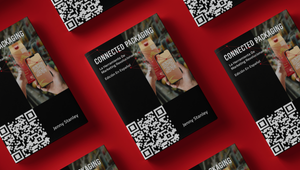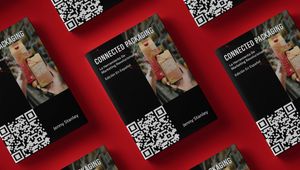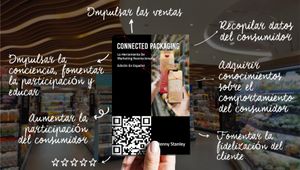
How QR Codes are Revolutionising Product Packaging: From Information to Interaction

Packaging has surpassed its traditional role of mere product protection. Today it serves as a powerful marketing tool, a direct line of communication between brands and consumers. Leading this transformation are QR codes, those seemingly simple square patterns that pack a punch when it comes to enhancing the consumer experience.
The Evolution of QR Codes in Packaging
QR codes, short for Quick Response codes, were initially developed in 1994 for the automotive industry. However, their potential in packaging remained largely untapped until smartphones became ubiquitous. Now, with most consumers carrying QR scanners in their pockets, these codes have become a gateway to a world of digital experiences.
Initially, QR codes on packaging were used primarily to provide basic product information. A quick scan would reveal ingredients, nutritional facts, or manufacturing details. While useful, this application only scratched the surface of QR codes' potential.
From Static Information to Dynamic Interaction
Today, QR codes are revolutionising product packaging by transforming it into an interactive medium. Here's how:
- Augmented Reality Experiences: Brands are using QR codes to launch AR experiences that bring their products to life. Imagine scanning a wine bottle to see a virtual vineyard tour or a toy package that shows a 3D demo of the product in action.
- Personalised Content: QR codes can lead to personalised landing pages, offering content tailored to the consumer's location, time of day, or previous interactions with the brand.
- Authentication and Traceability: In industries where counterfeiting is a concern, QR codes serve as a quick authentication tool. Consumers can verify product authenticity and even trace the journey of their product from manufacturer to store shelf.
- Gamification and Rewards: Many brands are incorporating QR codes into loyalty programs and promotional campaigns. Scanning the code might unlock a game, enter the consumer into a sweepstakes, or offer exclusive discounts.
- Sustainability Information: As consumers become more eco-conscious, QR codes provide an efficient way to share detailed information about a product's environmental impact and recycling instructions.
- Real-time Updates: Unlike printed information, QR codes can lead to web pages that are updated in real-time. This is particularly useful for sharing the latest product news, recalls, or usage tips.
The Impact on Consumer Behavior
This shift from static information to dynamic interaction is having a profound impact on consumer behaviour. Packaging is no longer just the last thing a consumer sees before purchase—it's becoming the first point of digital engagement with a brand.
Consumers are increasingly expecting this level of interactivity. A study by Appetite Creative found that consumers are more likely to purchase a product if it offers an interactive packaging experience.
Challenges and Considerations
While QR codes offer immense potential, their implementation comes with challenges. Brands must ensure that the digital experience is seamless and adds genuine value. A clunky website or irrelevant content can quickly turn an innovative idea into a frustrating experience.
Privacy is another key consideration. As QR codes collect data on consumer behaviour, brands must be transparent about data usage and comply with regulations like GDPR.
The Future of QR Codes in Packaging
As technology evolves, so too will the capabilities of QR codes. We're likely to see more integration with emerging technologies like blockchain for enhanced traceability, and AI for even more personalised experiences.
The future of packaging is undoubtedly digital, and QR codes are leading the charge. They're transforming packaging from a passive container into an active touchpoint, bridging the physical and digital worlds in ways we're only beginning to explore.
In this new era of connected packaging, the question for brands is no longer whether to implement QR codes, but how to use them most effectively to create meaningful, memorable interactions with their consumers.















